9 Ultra-Minimalist Phones Set to Dominate in 2025
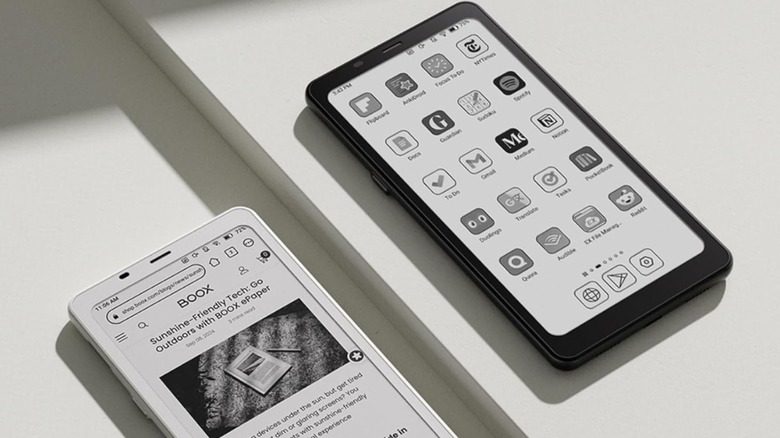
Many of us spend too much time online, engrossed in social media streams and bite-sized clips. We mindlessly swipe through Instagram and TikTok on our mobile devices, losing track of countless hours without even noticing. Besides squandering valuable moments, these applications constantly divert our attention, hampering our efficiency and causing us to underperform at work. Although abandoning our phones altogether might seem like an ideal way to escape the continuous surge of instant gratification they provide, it’s impractical as we rely heavily on them for everyday tasks. Instead, a feasible strategy would be to limit their use or switch off notifications. configure Digital Wellbeing limits on your device Or opt for a minimalistic phone designed to handle essential functions without introducing numerous interruptions.
Reducing phone overuse The demand of the moment has led to an array of minimalist smartphones hitting the market. Nonetheless, what qualifies as "minimalist" might differ across devices. Some individuals prefer a device strictly for calling and texting, whereas others seek additional features such as email capabilities or ride-hailing services. To accommodate various preferences, we’ve compiled several choices tailored to different user needs. Based on your desire for reduced smartphone engagement, you could opt either for a model designed to limit screen use or one that strips away all nonessential functions, reviving the simplicity of early 2000s-era basic phones.
Read more: 7 of the Most Practical USB Devices Available for Purchase on Amazon
Minimal Phone
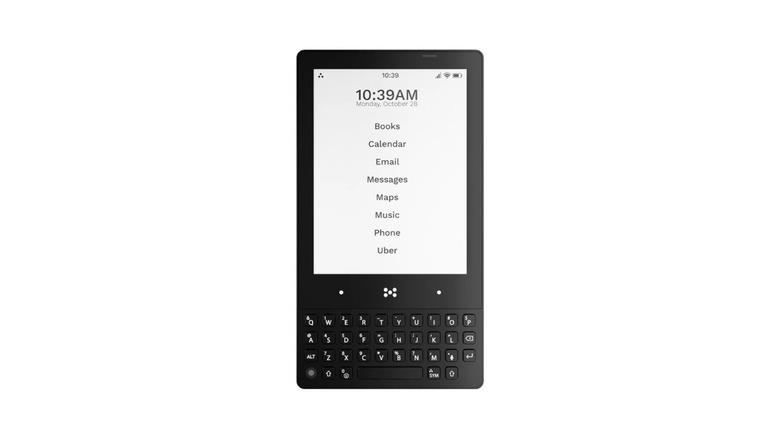
The Minimal Company's Minimal Phone One of our top choices for a smartphone designed to encourage more reading, engaging in hobbies, or getting physically active is this device. What sets it apart from other minimalist phones includes its distinctive design featuring a physical QWERTY keyboard akin to those seen on old BlackBerry models, which makes typing texts and emails straightforward. Additionally, despite being able to handle typical smartphone tasks, the Minimal Phone comes with adjustments aimed at reducing extended use. This is evident through its notably smaller screen size and usage of an E Ink display, much like what’s used on e-readers. e-readers like the Kindle For those who might not know, e-ink displays are gentler on the eyes because they do not produce light, whereas LCD or LED screens do.
Nevertheless, e-ink screens do not refresh as swiftly as LCD or LED monitors, making the act of browsing social media feeds or engaging with content less seamless. On the bright side, this limitation aids in curbing excessive screen usage because the primary purpose is to utilize the device solely for essential activities. Additionally, the manufacturer has tailored the launcher, providing a streamlined interface where just key applications are displayed on the main screen. However, access to the complete Google Play Store remains available, enabling you to install whatever application suits your needs. In our view, this makes for an excellent gateway into simplified smartphones, all while maintaining fundamental smart capabilities. Furthermore, considering everything it provides, the price seems quite reasonable.
Light Phone III
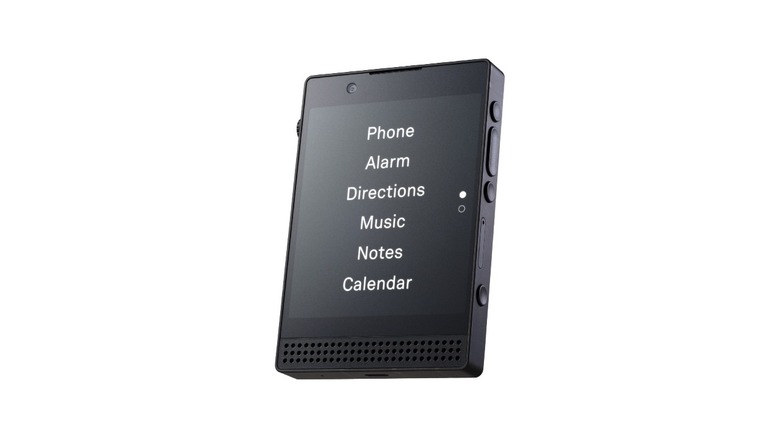
In contrast to the Minimal Phone, the Light Phone 3 eliminates all the fancy features of a smartphone. This includes having no access to the Play Store or any similar app stores, which means you can only use the applications that come installed on the device from the start. Essential tools such as Contacts, Alarms, Maps, Music, Notes, and Calendar are provided; however, checking your emails, summoning an Uber, or streaming music directly through the phone isn’t possible. major music streaming services The built-in music player supports only offline tracks that must be transferred from your computer using an outdated method similar to how older iPods functioned. Such limitations significantly curtail opportunities for extended screen engagement. Nonetheless, the absence of fundamental functionalities coupled with its cost may deter numerous potential buyers.
At a price tag of $799 (following early orders at $599), one might anticipate being able to summon a rideshare after a night out or enjoy streaming podcasts from Spotify during commutes. Of course, blocking access to social media platforms is part of what makes such a device appealing. However, paying a premium for a minimalist handset capable solely of making calls, sending texts, and performing rudimentary functions like setting alarms feels excessive. Despite this, the construction quality stands out as top-notch. Additionally, the manufacturer promises forthcoming feature enhancements through software upgrades. Therefore, should you desire total disconnection from digital life and accept certain limitations, the Light Phone III could be quite suitable for your needs.
Light Phone II
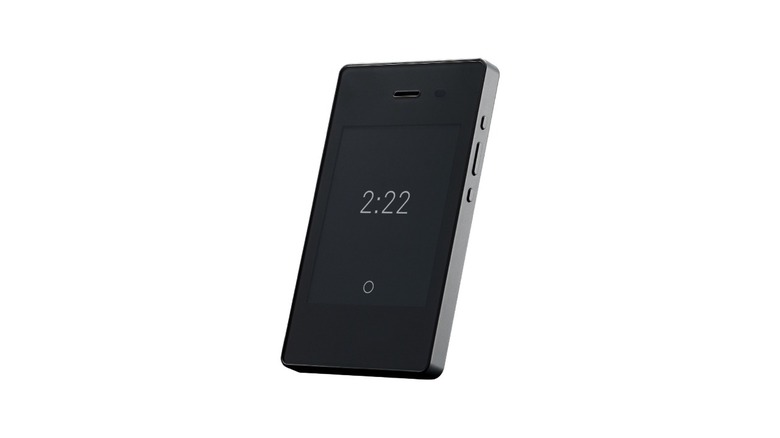
We wouldn't be surprised if you don't want to spend 800 bucks on a phone that's barely smart, especially when a full-blown iPhone 16, which is better in every single aspect, costs just as much. But if you like the concept of the Light Phone and the brand's ideology, you can still opt for the last-gen Light Phone II . At $299, it's substantially more affordable compared to its latest sibling, which may appeal to the masses a lot more. The core functionality of the Light Phone II remains the same, in the sense that it has a small display with only the bare minimum features required to make it a phone. It has an inferior display, a smaller chassis, and most importantly, doesn't have any onboard cameras.
The Light Phone III has two cameras -- one on the front and one on the rear -- so you can still use it to capture those special moments in your daily life. Unfortunately, you can't do that on the last-gen model. If that's not a deal-breaker for you, and you want the Light Phone experience without burning a hole in your pocket, the Light Phone II offers just that. In my opinion, treat this as a secondary phone that you keep in your pocket at all times, but also carry a full-blown smartphone in your backpack for those edge cases where you may need to book a cab, make online payments, or send an important email to a client.
Apple Watch Series 10 Cellular
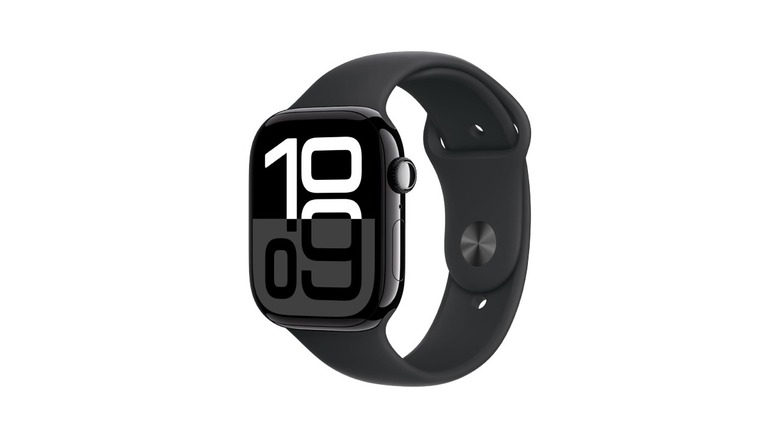
Needless to say, the Apple Watch Series 10 It isn’t actually a phone; rather, it’s clearly a watch. Nonetheless, it serves as a great device for overcoming your smartphone dependency while maintaining connectivity with the external world. If you opt for the cellular version of this gadget, Apple Watch , you can set up an eSIM with your current phone number. After doing this, your Apple Watch will be able to handle calls, send messages, and respond to notifications even when it’s not close to your iPhone. This means you’ll keep getting your emails and crucial updates right on your wrist. However, you won’t fall into a never-ending scroll because these apps aren’t fully accessible on the watch.
The Apple Watch doesn’t include popular apps like Instagram, TikTok, Twitter, YouTube, or similar services. Instead, it offers practical applications such as Notes and Uber, which let you perform tasks right from your wrist whenever needed. Although some methods might enable you to sidestep these restrictions and access social media platforms via the watch, the small display typically deters most people due to usability issues. Furthermore, streaming capabilities through apps like Spotify and Apple Music mean you can enjoy tunes and podcasts directly on the device, serving almost as well as a standalone phone but avoiding features designed to hook you into constant usage. It’s worth noting too that many current iPhone owners likely own an Apple Watch already, eliminating additional hardware expenses. Still, be aware that compatibility depends on having either a Cellular or LTE model; otherwise, the GPS-only variant requires proximity to an accompanying iPhone to link up with cellular networks.
Nokia 2780 Flip
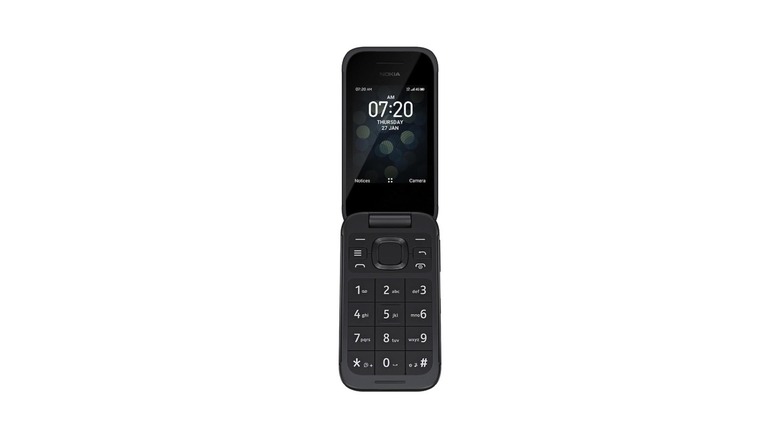
We've now entered the feature phone territory, which is a big departure from a traditional smartphone. Unlike the Minimal Phone or either of the Light Phones, the Nokia 2780 It’s not a smartphone missing some features; rather, it's a simple handset providing only essential functions such as making calls, sending SMS messages, keeping contact details, and playing games. Due to KaiOS, this device includes extra capabilities one typically doesn’t expect from a feature phone—like access to Google Maps, YouTube, web browsing, and downloading applications through an app store. Although these functionalities work, their loading times are painfully sluggish, discouraging frequent use. Given its low price point, the processor isn't built for handling intensive operations efficiently.
Certainly, you may utilize navigation during emergencies and search online for a restaurant’s contact details to secure reservations; however, this won’t necessarily captivate your interest. Additionally, due to the small screen size, limited data presentation becomes an issue, compounded further by poor image quality. The device comes equipped with a built-in camera designed primarily for capturing essential documents or jotting down quick notes like phone numbers. Furthermore, it features an exterior display showing missed alerts and current time whenever the phone is folded shut. This handset serves well as a basic communication tool suitable for children, senior citizens, or individuals seeking an affordable option capable of handling fundamental tasks such as voice calls and texting.
HMD Barbie Phone
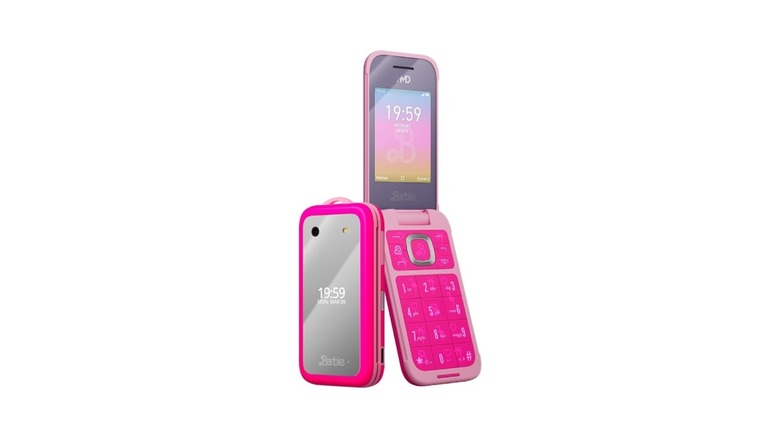
A number of you might know that HMD produced cellphones for Nokia, including the aforementioned Nokia 2780 as part of their collaboration. Since the conclusion of their agreement with Nokia, however, HMD has started selling devices under its own label. Most recently, the company partnered with Mattel to release a distinctive model known as the Barbie Phone. This device stands out not only because of its eye-catching design but also due to its connection with the iconic doll brand. HMD Barbie Phone It is fundamentally a Nokia 2780 internally. The processor, built-in memory, screen, keyboard, and power source are identical to those found in the Nokia 2780. You can view it as giving the 2780 model a new look tailored specifically for a particular audience.
In terms of aesthetics, I'm quite fond of the bold pink design of the Barbie Phone. It’s visually appealing, with the keypads harmoniously matching the overall hue of the device and the Barbie logo prominently displayed at the front. Interestingly, this front panel boasts a glossy mirror-like surface which enhances both visual appeal and self-framing during selfies taken with the included camera. Moreover, the exterior screen seamlessly integrates into the mirrored facade, providing an uninterrupted look. Functionally speaking, the handset mirrors the capabilities of the Nokia 2780—allowing standard functions such as voice calls, texting, playing classic games like Snake, along with accessing applications including YouTube, Google Maps, and browsing the internet via its built-in web browser. Should you desire a simple yet distinctive mobile option sure to draw attention, consider the BarbiePhone.
Boox Palma 2
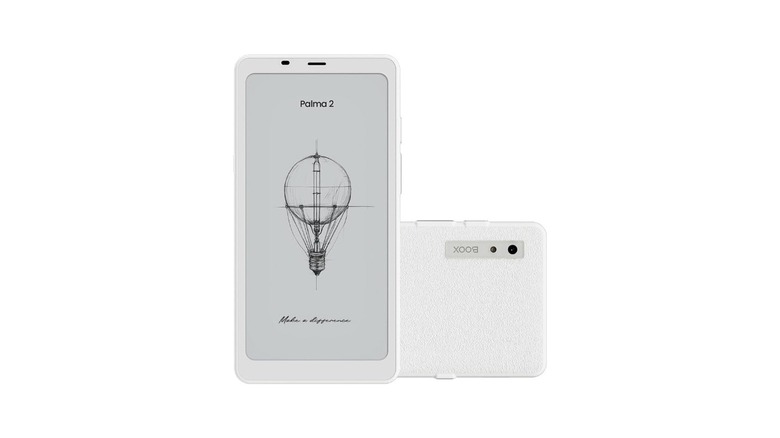
Technically speaking, the Boox Palma 2 is a pocket-sized e-reader And while it doesn’t fully embody all aspects of a traditional smartphone, this device does offer Wi-Fi connectivity, access to the Google Play Store, a sizable screen, and a rear-facing camera. Additionally, it’s compact enough to fit easily into your pants pocket—criteria that might be sufficient to classify it as a smartphone come 2025. It lacks a SIM card slot though, which means you won’t be able to place voice calls through cellular networks or utilize mobile data services. Nonetheless, applications such as WhatsApp and Telegram allow for texting and calling via an active Wi-Fi connection or mobile hotspots whenever available. Essentially, once you get past those details, the Boox Palma functions much like a smaller version of a Kindle but comes equipped with many additional capabilities.
Similar to the Minimal Phone, you have access to the complete Google Play Store, allowing you to download whichever apps you prefer. Like the Minimal Phone, this device features an e-ink screen. The main intended user group for the Boox Palma 2 consists of avid readers looking for a compact reading tool they can take along during commutes or trips. Additionally, because of the low refresh rate of the e-ink display and the absence of cellular connectivity, it functions effectively as a basic phone too. Onyx, which produces these devices, has established itself through reliable e-reader products such as the Boox Note Air 2 Plus For some time now, thus their offerings are definitely refined and well worthy of the requested price.
Motorola Razr 2023
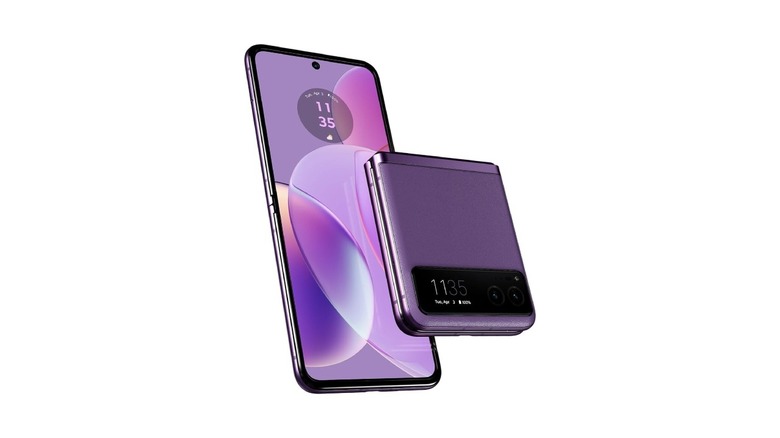
In every practical sense, the Moto Razr 2023 is a full-fledged smartphone with very few compromises . It has a large and vibrant display, a capable processor, a dual-camera setup, and the standard version of Android, which gives you access to all apps -- including social media platforms. However, Moto has unknowingly made a minimalist phone in the form of the Moto Razr -- all thanks to the clamshell design. Here's how it works. The Razr 2023 has a tiny screen on the outside, which can only display the time, date, and incoming notifications and calls. To use any app or get any sort of work done, you will have to open up the phone to use the larger display. While this seems rather simple, the fact that you need to perform an extra action to use the phone is a big deterring factor.
I used the Moto Razr+ As my primary device for a month, I found it unbearable that I needed to unfold the phone every time I wanted to do something genuinely significant, even though it boasted a significantly bigger display. The inconvenience became such an annoyance that I avoided using my phone entirely when I was outside. The constant unfolding and refolding grew tedious very quickly, particularly since I had to repeat these actions numerous times throughout each day. Because of this, obtaining the Motorola Razr 2023 With its small external display, this is definitely the quickest route to developing disdain for your phone, which could ultimately result in reduced screen time. That’s quite a 200 IQ move, isn’t it?
Minimalist Phone Launcher
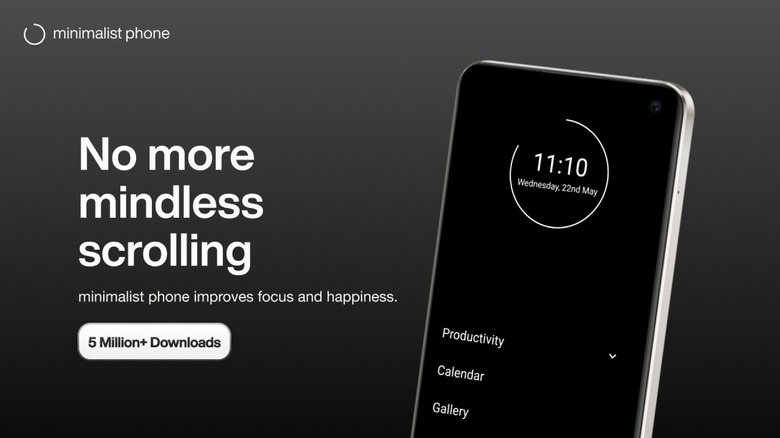
All the options discussed until now require buying a brand-new device to substitute your current phone. However, imagine being able to transform your present smartphone into one capable of performing just essential functions—essentially turning it into a minimalistic handset. Minimalist Phone launcher It does precisely that. This application available on the Google Play Store acts as a replacement for your Android device’s current launcher through a straightforward overlay. It provides quick access to essential applications such as Phone, Messages, Camera, Notes, Calendar, Gallery, among others. By blocking out non-essential apps, it prevents endless scrolling distractions. One significant benefit of utilizing such an app is avoiding the expense of buying a new phone.
Moreover, you can keep utilizing your current phone’s cameras, offering significantly better quality than those found on minimalistic phones. This way, you can adopt a more moderate stance towards reducing screen time by imposing limits on your social media applications. The Digital Wellbeing feature on Android provides a comparable option. The functionalities provided by the Minimalist Phone launcher are quite comprehensive, helping you stay within your designated timeframe. Additionally, this application allows you to configure notification filters, enabling only specific applications and contacts to alert you. It’s important to mention that accessing all the features requires purchasing the complete version for $15; however, this single fee seems much more affordable compared to buying a brand-new smartphone which could cost around $300.
How We Selected The Phones
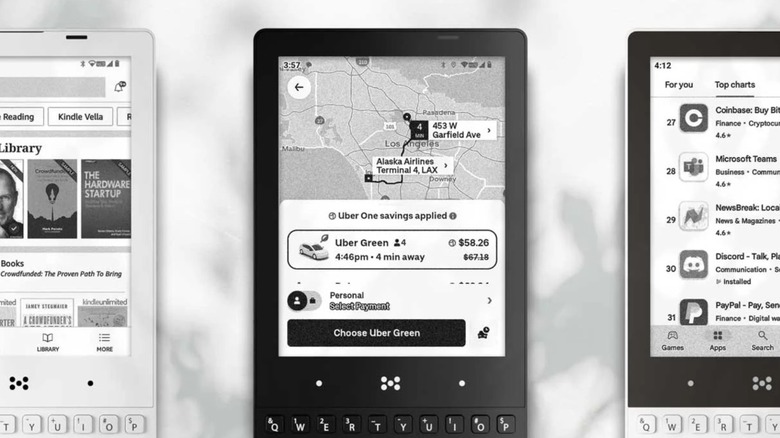
Escaping screen time in today's day and age is a herculean task. It's pretty much impossible, if you ask me. However, there are ways in which one can cut down on smartphone usage to a large extent, and one of the most effective ones is using a minimalist phone like the ones mentioned above. Pretty much any phone without smartphone capabilities can be termed a minimalist phone. However, we've compiled this taking into account the requirements of several different demographics. The Minimalist Phone, Moto Razr, and Boox Palma 2, for instance, are for those who want all the features of a smartphone, but with enough friction that deters them from using it for long hours. As for the Light Phone duo, it's for those who want a minimalist experience with a premium form factor.
The feature phones can be for parents who want to give their kids an affordable phone for emergencies, but don't want to expose them to the online world. Or, they could be used by the elderly since touchscreen smartphones can be intimidating for some people. The idea is to include multiple options for everyone, while making sure all of them adhere to the core idea of a minimalist phone that helps reduce screen time. You can pick the right option for yourself depending on how much you want to spend, how badly you want to reduce your screen time, or how important some features or apps are to you.
Interested in keeping up with the newest technology and automotive developments? Sign up for our complimentary email newsletter. For the most recent news updates, detailed guidebooks, and practical advice, delivered once via email.
Read the original article on Romero.my.id .
0 Response to "9 Ultra-Minimalist Phones Set to Dominate in 2025"
Post a Comment